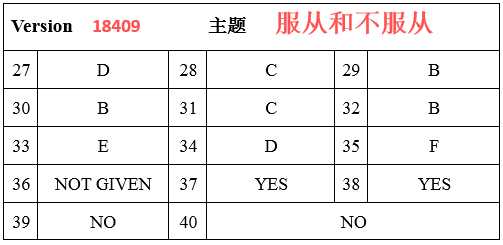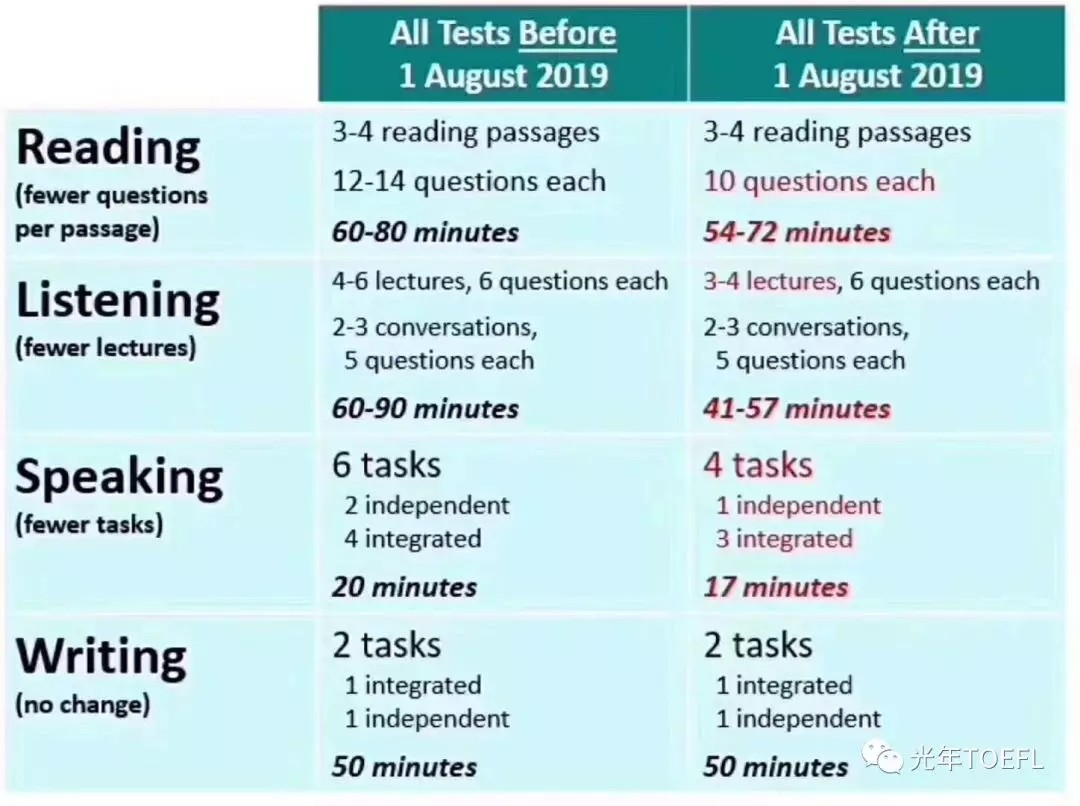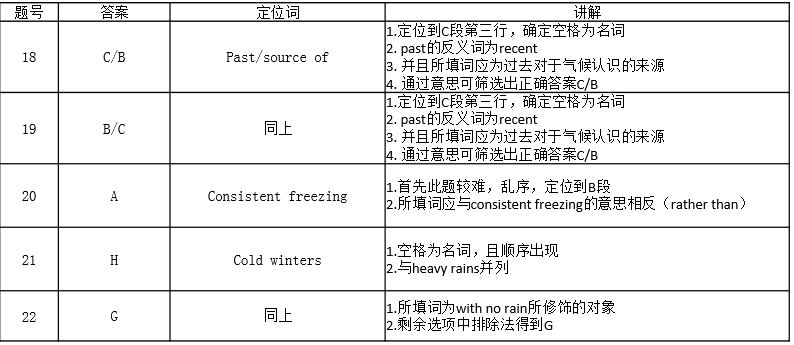托福阅读题中小结题是较为常见且有一定难度的题型,正确解答这一题型大家需要对全文内容都有大致了解才行。今天小编给大家带来了托福阅读小结题型如何应对,希望能够帮助到大家,一起来学习吧。
托福阅读小结题型如何应对
托福阅读小结题解题思路步骤:最快速度理出文章构架
第一步就是要在最快的速度内理出文章构架:即在做所有题之前先快速跳读一遍文章。通读文章的时候只需要读每段的首句、末句和转折句。一般抓住了首尾句和转折句就抓住了一段的主旨。如果在阅读中出现了转折,也就是说后面说的事情和之前讲的不一样,也就是说文章的意思有两层,转折句就是第二层意思的概括。
同学在进行托福阅读的时候做笔记是非常有必要的,看似在浪费时间,实则节省时间,将重点语句划分出来,在解答时会一目了然。托福阅读中的文章架构都是很清晰,一般我们看段首尾句和转折句就可以抓住文段的中心。
托福阅读小结题解题思路步骤:学会准确判断题目选项
第二步判断选项,做文章小结题。我们要谨记选出来的选项是要能概括文章大意的,所以一些细节性的,和文章表述相矛盾的,或者是文章中未提及的选项都可以借助排除法进行选择。
很多同学在进行托福阅读中分辨不出那些是文章没提及的,那些是跟文章相违背的,其实这都是关于细节性的考察,我们之前做的题目就是积累细节的过程,因为主旨不可能只提一次,而且在不显眼的地方出现的,借助我们的笔记,总结出各段的大意,那样就能很容易判断出那些是段落主旨大意那些是细节性或者无关的信息。
托福阅读:美国历史背景
The continent's first inhabitants walked into North America across what is now the Bering Strait from Asia. For the next 20,000 years these pioneering settlers were essentially left alone to develop distinct and dynamic cultures. In the modern US, their descendants include the Pueblo people in what is now New Mexico; Apache in Texas; Navajo in Arizona, Colorado and Utah; Hopi in Arizona; Crow in Montana; Cherokee in North Carolina; and Mohawk and Iroquois in New York State.
The Norwegian explorer Leif Eriksson was the first European to reach North America, some 500 years before a disoriented Columbus accidentally discovered 'Indians' in Hispaniola (now the Dominican Republic and Haiti) in 1492. By the mid-1550s, much of the Americas had been poked and prodded by a parade of explorers from Spain, Portugal, England and France.
The first colonies attracted immigrants looking to get rich quickly and return home, but they were soon followed by migrants whose primary goal was to colonize. The Spanish founded the first permanent European settlement in St Augustine, Florida, in 1565; the French moved in on Maine in 1602, and Jamestown, Virginia, became the first British settlement in 1607. The first Africans arrived as 'indentured laborers' with the Brits a year prior to English Puritan pilgrims' escape of religious persecution. The pilgrims founded a colony at Plymouth Rock, Massachusetts, in 1620 and signed the famous Mayflower Compact - a declaration of self-government that would later be echoed in the Declaration of Independence and the US Constitution. British attempts to assert authority in its 13 North American colonies led to the French and Indian War (1757-63). The British were victorious but were left with a nasty war debt, which they tried to recoup by imposing new taxes. The rallying cry 'no taxation without representation' united the colonies, who ceremoniously dumped caffeinated cargo overboard during the Boston Tea Party. Besieged British general Cornwallis surrendered to American commander George Washington five years later at Yorktown, Virginia, in 1781. In the 19th century, America's mantra was 'Manifest Destiny.' A combination of land purchases, diplomacy and outright wars of conquest had by 1850 given the US roughly its present shape. In 1803, Napoleon dumped the entire Great Plains for a pittance, and Spain chipped in with Florida in 1819. The Battle of the Alamo during the 1835 Texan Revolution paved the way for Texan independence from Mexico, and the war with Mexico (1846-48) secured most of the southwest, including California.
The systematic annihilation of the buffalo hunted by the Plains Indians, encroachment on their lands, and treaties not worth the paper they were written on led to Native Americans being herded into reservations, deprived of both their livelihoods and their spiritual connection to their land. Nineteenth-century immigration drastically altered the cultural landscape as settlers of predominantly British stock were joined by Central Europeans and Chinese, many attracted by the 1849 gold rush in California. The South remained firmly committed to an agrarian life heavily reliant on African American slave labor. Tensions were on the rise when abolitionist Abraham Lincoln was elected president in 1860. The South seceded from the Union, and the Civil War, by far the bloodiest war in America's history, began the following year. The North prevailed in 1865, freed the slaves and introduced universal adult male suffrage. Lincoln's vision for reconstruction, however, died with his assassination. America's trouncing of the Spaniards in 1898 marked the USA's ascendancy as a superpower and woke the country out of its isolationist slumber.
The US still did its best not to get its feet dirty in WWI's trenches, but finally capitulated in 1917, sending over a million troops to help sort out the pesky Germans. Postwar celebrations were cut short by Prohibition in 1920, which banned alcohol in the country. The 1929 stock-market crash signaled the start of the Great Depression and eventually brought about Franklin Roosevelt's New Deal, which sought to lift the country back to prosperity. After the Japanese dropped in uninvited on Pearl Harbor in 1941, the US played a major role in defeating the Axis powers. Atomic bombs dropped on Hiroshima and Nagasaki in 1945 not only ended the war with Japan, but ushered in the nuclear age. The end of WWII segued into the Cold War - a period of great domestic prosperity and a surface uniformity belied by paranoia and betrayal. Politicians like Senator Joe McCarthy took advantage of the climate to fan anticommunist flames, while the USSR and USA stockpiled nuclear weapons and fought wars by proxy in Korea, Africa and Southeast Asia. Tensions between the two countries reached their peak in 1962 during the Cuban Missile Crisis.
The 1960s was a decade of profound social change, thanks largely to the Civil Rights movement, Vietnam War protests and the discovery of sex, drugs and rock &roll. The Civil Rights movement gained momentum in 1955 with a bus boycott in Montgomery, Alabama. As a nonviolent mass protest movement, it aimed at breaking down segregation and regaining the vote for disfranchised Southern blacks. The movement peaked in 1963 with Martin Luther King Jr's 'I have a dream speech' in Washington, DC, and the passage of the landmark 1964 Civil Rights Act and 1965 Voting Rights Act. Meanwhile, America's youth were rejecting the conformity of the previous decade, growing their hair long and smoking lots of dope. 'Tune in, turn on, drop out' was the mantra of a generation who protested heavily (and not disinterestedly) against the war in Vietnam. Assassinations of prominent political leaders - John and Robert Kennedy, Malcolm X and Martin Luther King Jr - took a little gloss off the party, and the American troops mired in Vietnam took off the rest. NASA's moon landing in 1969 did little to restore national pride. In 1974 Richard Nixon became the first US president to resign from office, due to his involvement in the cover-up of the Watergate burglaries, bringing American patriotism to a new low.
The 1970s and '80s were a period of technological advancement and declining industrialism. Self image took a battering at the hands of Iranian Ayatollah Khomeni. A conservative backlash, symbolized by the election and popular two-term presidency of actor Ronald Reagan, sought to put some backbone in the country.
The US then concentrated on bullying its poor neighbors in Central America and the Caribbean, meddling in the affairs of El Salvador, Nicaragua, Panama and Grenada. The collapse of the Soviet Bloc's 'Evil Empire' in 1991 left the US as the world's sole superpower, and the Gulf War in 1992 gave George Bush the opportunity to lead a coalition supposedly representing a 'new world order' into battle against Iraq. Domestic matters, such as health reform, gun ownership, drugs, racial tension, gay rights, balancing the budget, the tenacious Whitewater scandal and the Monica Lewinsky 'Fornigate' affair tended to overshadow international concerns during the Clinton administration. In a bid to kickstart its then-ailing economy, the USA signed NAFTA, a free-trade agreement with Canada and Mexico, in 1993, invaded Haiti in its role of upholder of democracy in 1994, committed thousands of troops to peacekeeping operations in Bosnia in 1995, hosted the Olympics in 1996 and enjoyed, over the past few years, the fruits of a bull market on Wall St. The 2000 presidential election made history by being the most highly contested race in the nation's history.
The Democratic candidate, Al Gore, secured the majority of the popular vote but lost the election when all of Florida's electoral college votes went to George W Bush, who was ahead of Gore in that state by only 500 votes. Demands for recounts, a ruling by the Florida Supreme Court in favor of partial recounts, and a handful of lawsuits generated by both parties were brought to a halt when the US Supreme Court split along party lines and ruled that all recounts should cease. After five tumultuous weeks, Bush was declared the winner. The early part of Bush's presidency saw the US face international tension, with renewed violence in the Middle East, a spy-plane standoff with China and nearly global disapproval of US foreign policy with regard to the environment. On the domestic front, a considerably weakened economy provided challenges for national policymakers. Whether the US can continue to hold onto its dominant position on the world stage and rejuvenate its economy remains to be seen.
托福阅读:怎么走出做不对题目的怪圈
The extreme seriousness of desertification results from the vast areas of land and the tremendous numbers of people affected, as well as from the great difficulty of reversing or even slowing the process。
很多人在看到这句话的时候,经常翻译为"沙漠化是源于"或者翻译为"沙漠化导致""很多的土地与很多的人去影响的原因。 "这里面有两个点特别容易犯错误,一是result from是源于的意思,而不是单纯的导致的意思。二是affected在这里其实是后置定语,因此这里的意思是"被影响",这里很多人又疑惑了,因为我们以前看到的东西都是,人的因素导致沙漠化啊,怎么又会是被影响呢?这就是你的问题了,你被自己以前获得的信息给影响了,你只要知道文章的作者是这么认为的就可以了,何必把自己脑中的信息强加在本文作者身上呢?
这句话其实是一个很浅显的例子,举这个例子,其实就是想告诉很多考生很多时候,只是认为自己已经把文章读懂了,但是实际上对于文章的理解上有无数的错误,这其实就是语言的细节!这些细节点要想解决靠的是什么?靠的是单词的积累,靠的是语法的一步一步的打磨。
如果你经常有"最无奈的莫过于看得懂文章,但不对题"的感叹的时候,劝大家最好还是从自身下手,去检查自己的单词,以及语法,如果觉得不知道从哪里下手,到底该怎么提升,建议你做做老托福的语法,而且要多分析错题;并且多找一些文章多翻译一下,然后按照里面给出的译文去检查一下自己到底哪里理解错了,以及翻译错了,然后再将这些问题,搜集起来去找自己的同学、老师进行咨询,看看自己到底是哪个语法点出现了问题,只有这样才能摆脱"最无奈的莫过于看得懂文章,但不对题"的怪圈。
托福阅读相关文章:
★ 英语阅读
★ 学习资料库
★ 学习资料库
★ 大学英语学习计划书
★ 托福听力备考阶段高效提升必做4件事
★ 托福听力7大类关键信号词全面讲解
★ 托福改革后首考落幕 新增“托福移动考点”
★ 托福阅读备考5个步骤分享
★ 托福阅读句子插入题解题本质原则讲解
★ 短期内提升托福听说读写的方法
上一篇:托福阅读备考效率不理想如何改善






